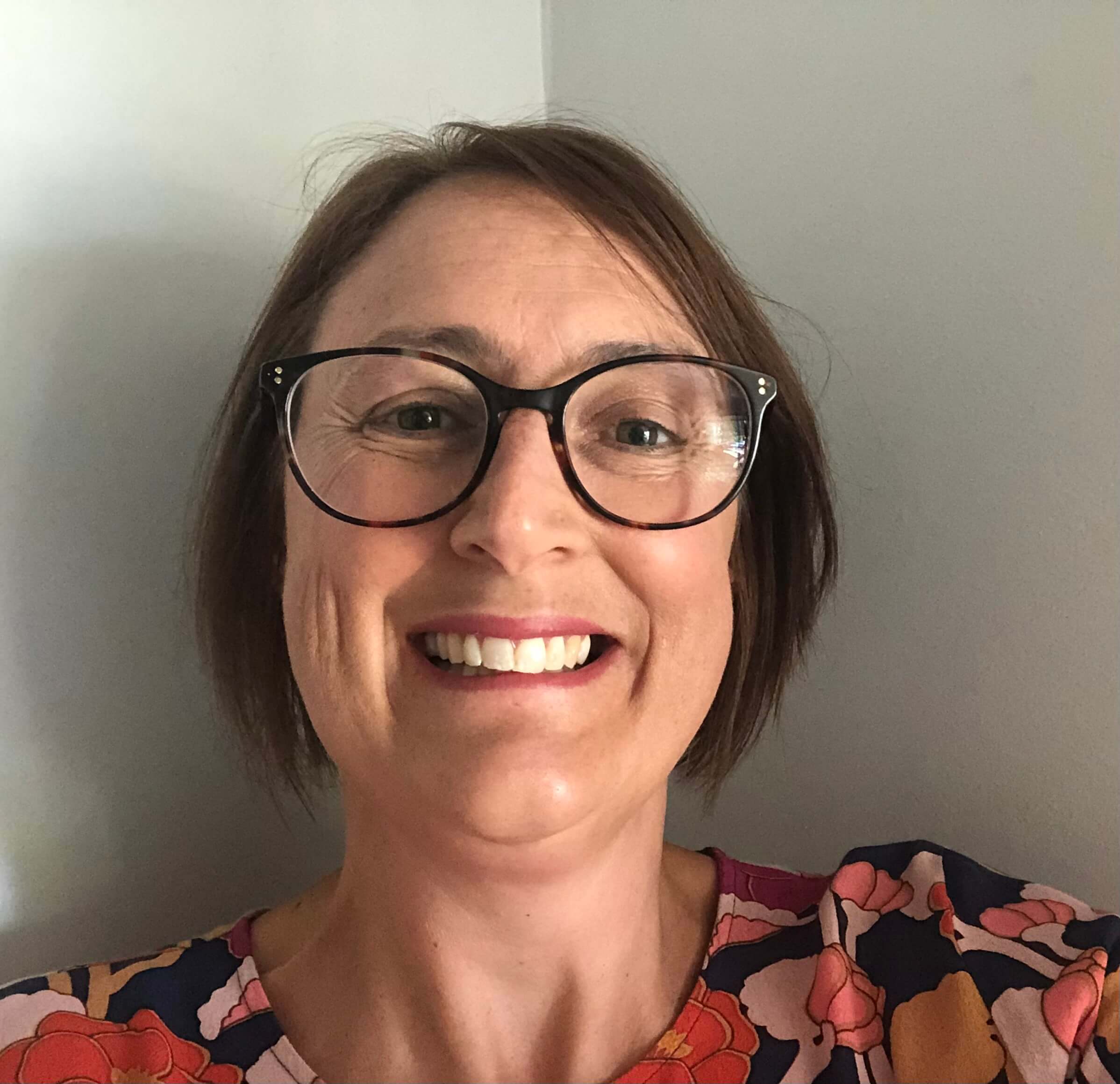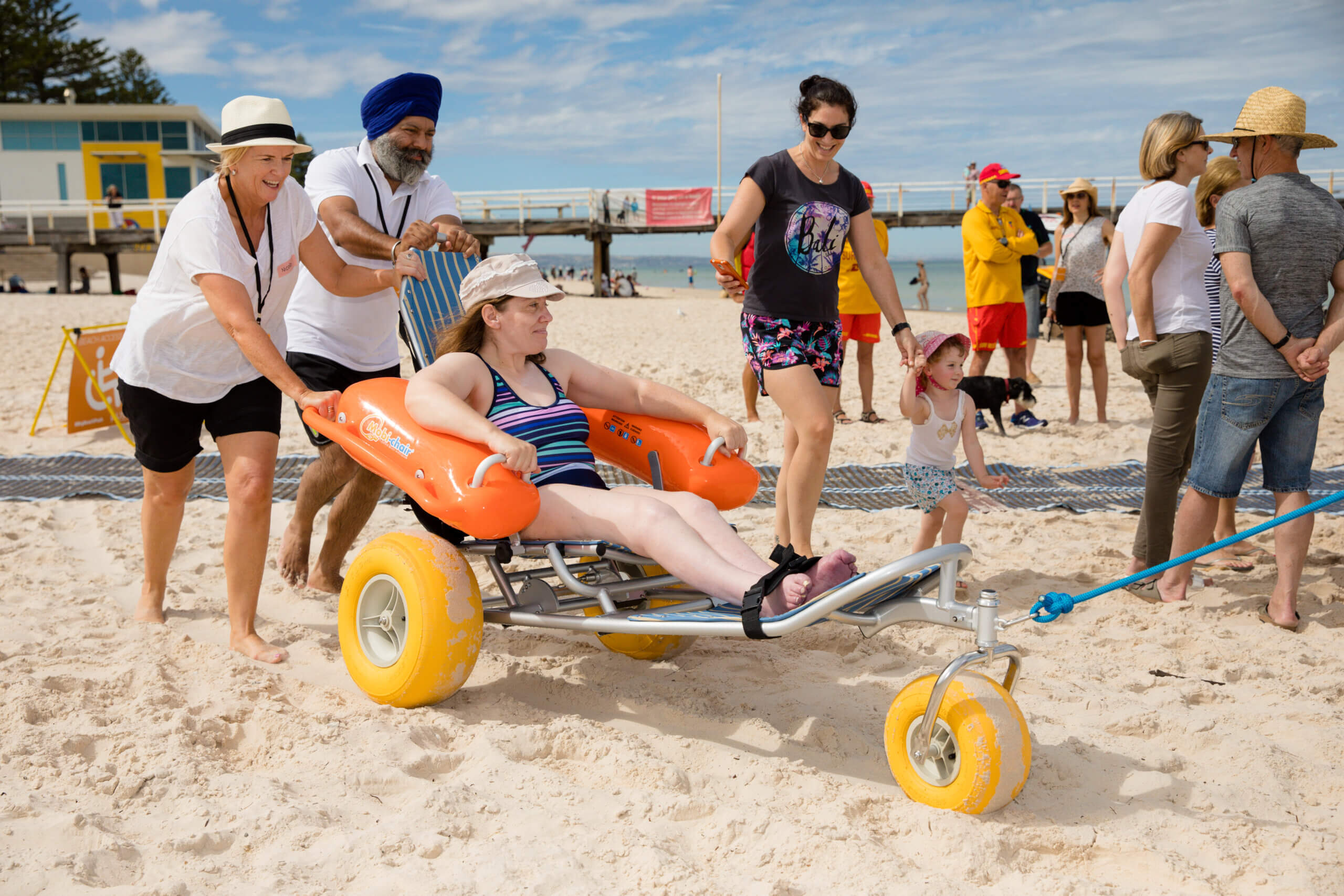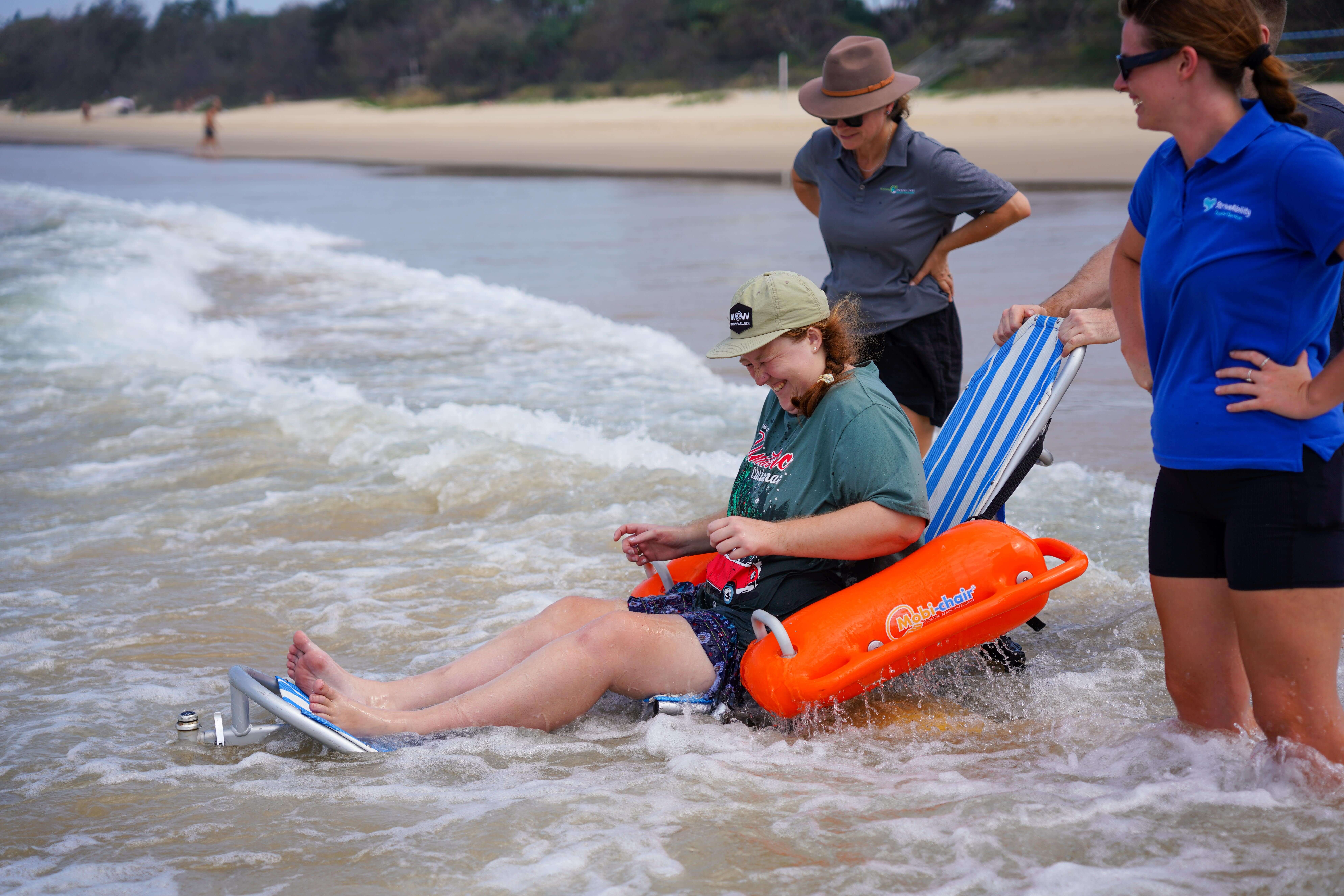
Accessible beach matting at Henley Beach
On public space: an interview with Bern Walker from Accessible Beaches
Bern Walker is a beach access project officer at Accessible Beaches Australia. She is an active member of the disability community and is passionate about inclusion for all in every aspect of life.
Bern has extensive experience, not only as the mother to a child with a disability but also in the Not For Profit sector where Bern was previously a Board Member and President for the Prader-Willi Syndrome Association of Victoria.

Can you tell us a bit about Accessible Beaches Australia and how your work relates to public spaces?
Accessible Beaches Australia (ABA) was created out of necessity by Shane Hryhorec. Shane grew up enjoying the beach and all it had to offer until suffering an accident in 2007 when he was 21, rendering him an incomplete quadriplegic. Shane assumed the beach was no longer for him as he could not navigate the soft sand until, while operating his disability equipment company he discovered beach matting and beach wheelchairs.
Shane started stocking beach access equipment however it became apparent that there was much more to making beaches accessible, including supporting infrastructure and attitudinal change. So, Shane started ABA in 2016, which became a registered charity in 2020.
Since then, we have been advocating for beaches to be accessible to people of all abilities as we believe the beach is for everyone. We work in partnership with councils, life saving clubs and community groups to make that happen.
Beaches are a quintessential part of the Australian way of life and arguably the most popular open spaces in our country, yet less than 2% of them are accessible to people with disabilities and mobility challenges. This is a confronting statistic given that 85% of Australians live within 50 kilometers of the coastline. In addition to enjoying the water, beaches are a gathering place for social activities. People with disabilities experience a greater incidence of social isolation and we have heard many stories of people sitting up near the carpark watching their family and friends enjoy the beach while they have no way of getting onto the sand.
Research shows that when beach access is facilitated, people with disabilities are more likely to participate in physical activities than when accessing green spaces and they experience a boost to their mental health and wellbeing, an experience shared by everyone accessing the beauty of the beach.

What are the current challenges and opportunities around improving accessibility to Australian beaches?
There are many challenges when it comes to improving accessibility at Australian beaches. The greatest challenge however is attitudinal barriers, particularly where embracing accessibility is seen as a ‘chore’ or as requiring extra effort that gets put on the back burner because it is too hard. When this happens, the underlying message is that people with disabilities and mobility challenges are less valued than the rest of society. If they were held with the same value then making public spaces accessible to everyone would be a no brainer.
This presents a unique opportunity however, to effect change in the way society places value on people. So we seek opportunities to engage in dialogue with the view to developing an understanding of not only the barriers and challenges experienced by people with disabilities but also reaching a shared understanding that we are all human and all deserve the same level of respect and value placement in society.
Can you give an example of a council/community that's leading the way in making beaches more accessible?
There are a number of councils throughout Australia who are committed to making their beaches accessible. Mornington Peninsula Shire in Victoria has 5 beaches that are accessible and are regularly looking at improving their accessible offering at their beaches. In 2023 Eurobodalla Shire in NSW made seven beaches accessible in one hit. One of the most accessible beaches and surrounding precincts is Henley Beach in Adelaide, which ticks almost all of the boxes for everything that you would want in an accessible beach.
Are there small steps placemakers/councils/planners/communities can take to make beaches more accessible?
We always say accessibility is a journey, you just have to start somewhere. Small actions can make a big difference. The key is to have a plan, knowing that it can take time to get the final destination. Many locations could be made reasonably accessible without big infrastructure improvements. As a start, look at accessible parking and where it is located, making sure it is at the closest and safest access point to pathways. Adding additional accessible car parking at locations that are very popular sends a message that you value accessibility.
Looking at how people with disabilities interact with the beach is the best way to start and will help you understand the barriers and challenges they experience. Together you can formulate potential solutions to overcome those barriers. Most councils have disability inclusion committees so see if any members would like to assist and put a call out on Social Media for members of the community that might like to participate.
The other key component to making beaches accessible is having the right mindset to facilitate access and inclusion. So valuing diversity and all members of the community is paramount, demonstrating the willingness to understand and overcome barriers is key and then treating people with disabilities the same as everyone else shows they are just as valued.

Australia is known for our beach culture. How do we compare internationally when it comes to providing accessibility?
Considering the extremely low percentage of accessible beaches and the many barriers to overcome to make them accessible, we could do much better. Greece for example made 247 of their beaches accessible in just 18 months. This is astounding and shows what is achievable. The key difference is many of their beaches are privately owned whereas in Australia there can be up to five different bodies that own or manage parts of the space between the road and the water. This presents challenges however collaboration can see these overcome and successful outcomes achieved.
Where do you see beach accessibility in the next 10 or 20 years?
We truly believe there is a growing understanding in Australia about the importance of accessibility and what true inclusion means and we are hopeful that as more people increase their awareness and understanding that things will change. People inherently want to believe that everyone has value. Overcoming unconscious bias is the key to unlocking that belief and enabling everyone to contribute and participate in society.
With that faith, we can see beach accessibility reaching new heights in the next 10 to 20 years, where many more beaches are accessible to everyone. We understand that not all beaches can be made accessible, however there are thousands of beaches out there presenting thousands of opportunities to provide access to this truly quintessential part of the Australian landscape.
All images supplied by Accessible Beaches Australia



